You are cordially invited to the following seminars presented by the delegates from NSF-Columbia University on 12 August, Friday from 9.30am. Venue: Level 5, seminar rooms.
Seminar 1 9.30am to 10.00am
Presenter Prof Edward Goh
Talk Title “Intracellular Calcium Signaling In Osteocytes: A Mechano-Transduction-Mechano Paradigm”
Intracellular Calcium Signaling In Osteocytes: A Mechano-Transduction-Mechano Paradigm
X. Edward Guo, Vice Chair and Professor of Biomedical Engineering Bone Bioengineering Laboratory
Department of Biomedical Engineering
Columbia University, New York
Osteocytes in vivo are embedded in the mineralized extracellular bone matrix, where their cell bodies reside in the lacunae and are interconnected to neighboring osteocytes through numerous intercellular processes. The 3-dimensional (3D) osteocyte network positioning and ability to communicate with other bone cells make osteocytes ideal mechanosensors of bone. Thus the role of osteocyte network and intercellular communication between osteocytes in response to mechanical stimulation may clarify the mechanisms behind normal bone adaptation to mechanical loading. We have been using intracellular calcium ([Ca2+]i) as a ubiquitous real-time signaling indicator for studying mechanotransduction in osteocytic network and individual osteocytes. Our group recently discovered that 2D osteocytic networks are much more sensitive than osteoblasts in terms of [Ca2+]i responses, especially under low magnitude fluid flow stimulation. In addition, we used a novel mouse tibia loading model for the real-time measurement of [Ca2+]i signaling in osteocytes in situ when the intact long bone was under dynamic loading. The resultant fluid-induced shear stress on the osteocytes in the lacuna canalicular system was also calculated from fluorescence recovery after photobleach (FRAP) technique. We confirmed that in situ osteocytes, but not bone surface cells, displayed repetitive [Ca2+]i spikes in response to dynamic mechanical loading, with spike frequency and magnitude dependent on the loading magnitude, bone tissue strain, fluid flow speed, and calculated fluid shear stress in the lacunar-canalicular system. However, positing a biological reason for this robust [Ca2+]i behavior in osteocytes has been difficult. Using a novel quasi-3D microscopy technique, we were able to simultaneously measure both [Ca2+]i and actin network deformation. We demonstrate phasic contractility in the cell body of MLO-Y4 osteocytes synchronized with [Ca2+]i spikes, possibly mediated through smooth muscle myosin. Similar to myocytes, a tight coupling between [Ca2+]i oscillations and reversible actomyosin contractions is observed. The implications of having smooth muscle myosin ATPase in osteocytes ushered a new mechano-transduction-mechano paradigm in mechanobiology of bone cells.
Biography
Dr. Guo received his M.S. in 1990 and Ph.D. in 1994 in Medical Engineering and Medical Physics from Harvard University-MIT. In 1994-1996, Professor Guo did his postdoctoral fellowship in the Orthopaedic Research Laboratories at the University of Michigan at Ann Arbor with Professor Steven A. Goldstein in orthopaedic bioengineering. In 1996 he joined the Department of Mechanical Engineering and then Department of Biomedical Engineering at Columbia University as an Assistant Professor. He was promoted to Associate Professor in 2001 and Associate Professor with tenure in 2003, and Professor in 2007. He directs the Bone Bioengineering Laboratory in the Department of Biomedical Engineering at Columbia focusing his research interests in micromechanics of bone tissue, computational biomechanics, and mechanobiology of bone. His past honors include Young Investigator Recognition Award from the Orthopaedic Research Society, National Research Service Award from the US National Institutes of Health (NIH), a CAREER award from the US National Foundation of Science (NSF), Funds for Talented Professionals (Joint Research Fund for Overseas Chinese Young Scholars) from the National Natural Science Foundation of China. He was elected as a fellow to the American Institute for Medical and Biological Engineering. He was one of the founders and served as co-Editor-in-Chief of Cellular and Molecular Bioengineering (CMBE), an international journal of US Biomedical Engineering Society (BMES). He has served many review panels for NIH, NSF, and NASA. His research has been supported by the Whitaker Foundation, the US NSF, and the NIH. He served as President of International Chinese Musculoskeletal Research Society, the Society for Physical Regulation in Biology and Medicine, Member of Board of Directors of Orthopaedic Research Society, and Member of Board of Directors of American Institute for Medical and Biological Engineering. He also founded the Special Interest Group (SIG) in CMBE in the BMES and served as its founding Chair.



